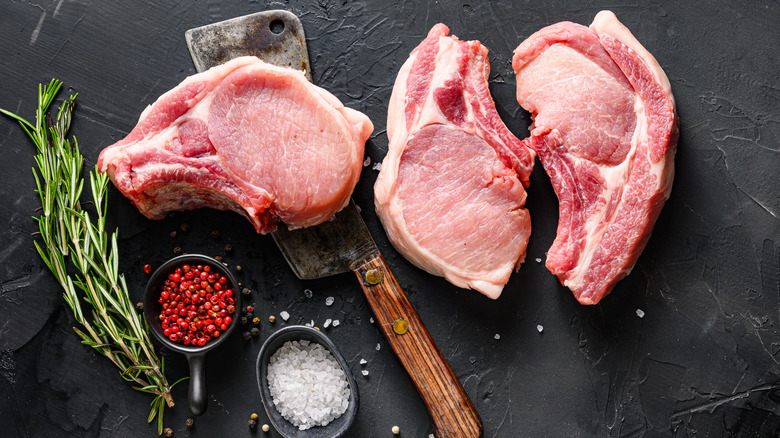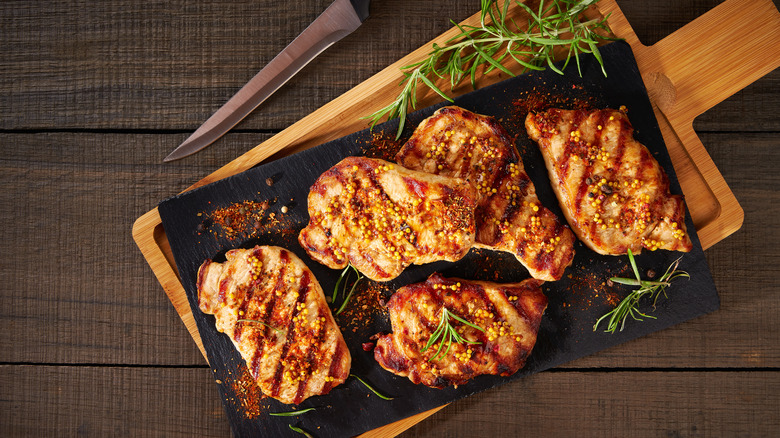Why You Need To Trim The Fat From Pork Chops When Grilling
The backyard grill is a classic tool for perfectly charring burgers, steaks, and hot dogs. It's also a great way to cook up other cuts of meat and give them the rich, smokey flavor of a backyard cookout. One option is the classic pork chop. It might not hold the same notoriety as other cuts, but that might be because of its history of being overcooked.
For many years, leaving even the slightest trace of pink in a chop was considered dangerous (via Smoker Cooking). This was due to a fear of a deadly infection called trichinosis, according to Mayo Clinic. This led to countless stiff, dry pork chop hockey pucks being served for dinners. Though, as Smoker Cooking notes, thanks to modern agricultural processes, this bacteria isn't anywhere near as present as it was in commercial pork populations. Bon Appétit notes that no one has had trichinosis for decades. The USDA even updated its cooking guidelines recently to reflect the change. They formerly recommended pork chops be cooked until reaching an internal temperature of 165 degrees Fahrenheit. They recommend reaching 135 degrees before letting the pork rest and achieving an even 145 degrees throughout.
Grilling pork chops may have been a misguided meal plan before, but there's no reason not to try out a pork chop on the grill with these updated guidelines. Before you do, remember to take an essential measure against grease fires.
Too much fat can cause flare-ups
There's no excuse not to slap some medium-rare pork chops on your grill this summer. One thing to keep in mind is to trim off the excess fat from your pork chop before cooking it. The Spruce Eats reports that trimming some of the fat off of your pork chop allows it to stay rich and full of flavor without dripping onto the heating elements and causing flare-ups. Grill flares can pose a threat to a perfectly roasted chop and can escalate into larger grease fires if you aren't careful (via Serious Eats).
To effectively prepare a pork chop, whether it's still on the bone or not, simply trim the exterior band of fat down to about one-quarter-inch width for grilling. This should still leave a nice band of fat to give moisture and flavor to your meat without causing serious flare-ups. Southern Living recommends taking this tip one step further and searing that fat into a crispy, flavorful char on the side of the pork chop. Just be sure to keep an eye on it and watch out for any flare-ups while doing so.

